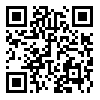Volume 3, Issue 4 (Occupational Medicine Quarterly Journal 2012)
tkj 2012, 3(4): 7-13 |
Back to browse issues page
Download citation:
BibTeX | RIS | EndNote | Medlars | ProCite | Reference Manager | RefWorks
Send citation to:



BibTeX | RIS | EndNote | Medlars | ProCite | Reference Manager | RefWorks
Send citation to:
Sharifian A, Aminian O, Afshari Saleh L. Occupational stress and its relationship with need le stick injury among emergency department personnel. tkj 2012; 3 (4) :7-13
URL: http://tkj.ssu.ac.ir/article-1-84-en.html
URL: http://tkj.ssu.ac.ir/article-1-84-en.html
2. Mashhad University of Medical Sciences, Mashhad, Iran , afsharisl@mums.ac.ir
Abstract: (11237 Views)
Introduction: Emergency personnel are usually exposed to needle stick injuries (NSI) and contamination with HBV, HCV & HIV. The cost of health and psychological effects of such injuries demonstrates the importance of evaluating its risk factors and preventing it. One of these factors is job stress.
Methods: A cross-sectional study was conducted among emergency personnel of 4 university hospitals in Tehran in 2008 - 2009. A triplex questionnaire was used including demographic features, Nordique psychological stress questionnaire and SPSS (Ver. 11) was used for analysis of the data.
Results: Tree hundred and fifty respondents including 162 (46.3%) males and 188 (53.7%) women, with an average age of 30±5.6 years including 146 residents (41.7%),43 interns (12.3%) & 161 nurses (46%) entered the study. Sixty nine persons (19.7%) reported a history of NSI and 99 persons (28.3%) had Blood and Body fluid exposure during last 3 months.158 persons (45.1%) were classified as low, 158 (45.1%) as moderate and 34 (9.8%) as severe stress level. there was not any significant difference between the proportion of NSI in different stress levels (P=0.374), but there was a significant difference in NSI proportion between nurses, and interns, residents (P=0.002).
Conclusion: This study demonstrates that the frequency of NSI & BBFE in emergency personnel is significant, especially in residents. So it’s necessary to have a program for reducing it. The stress level didn't influence the rate of NSI. We suggest doing a survey to study the relationship between NSI and job stress factors (such as workload, role ambiguity) separately.
Type of Study: Research |
Subject:
occupational medicine
Received: 2012/06/19 | Accepted: 2020/04/14 | Published: 2020/04/14
Received: 2012/06/19 | Accepted: 2020/04/14 | Published: 2020/04/14
Send email to the article author
| Rights and permissions | |
 |
This work is licensed under a Creative Commons Attribution-NonCommercial 4.0 International License. |





